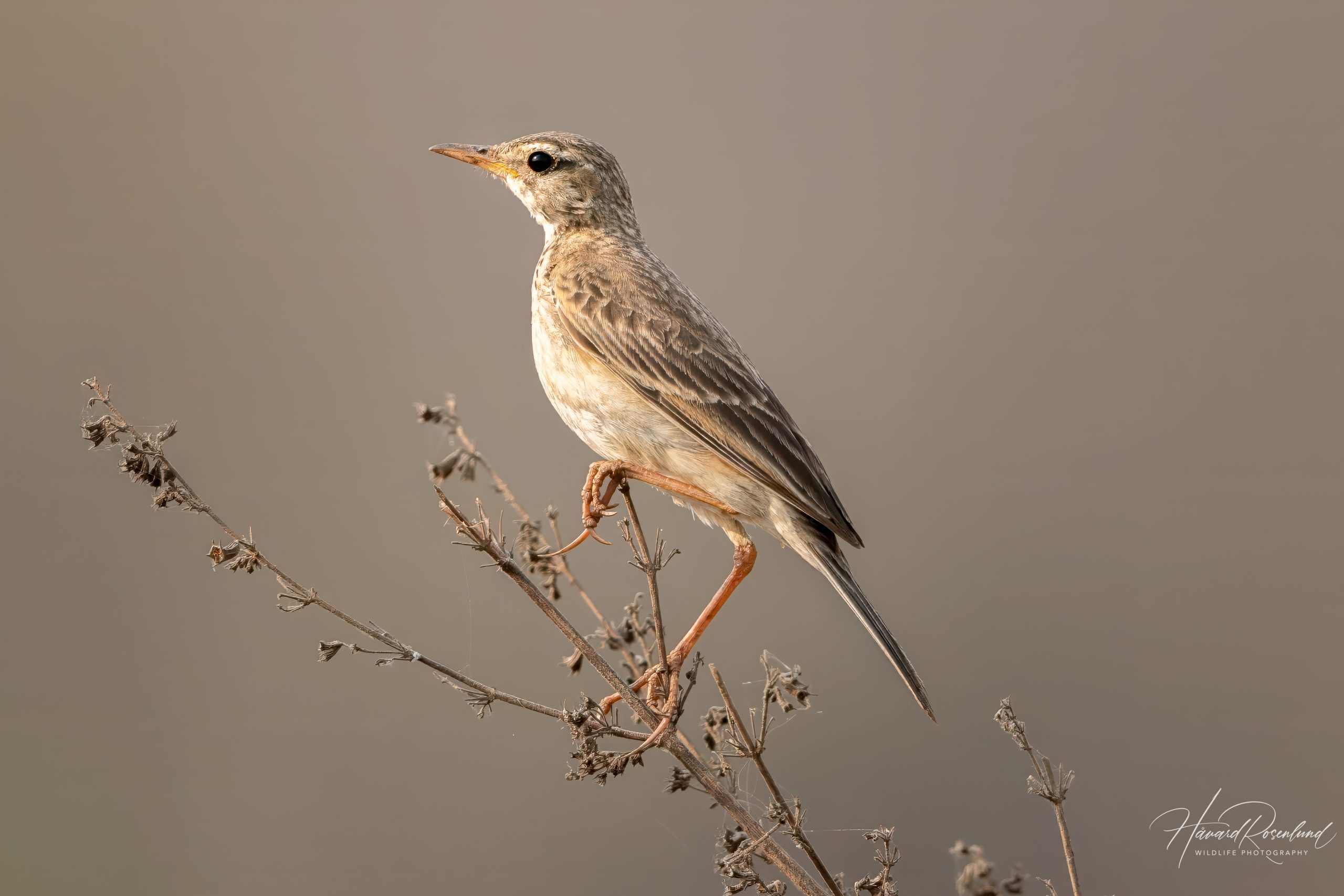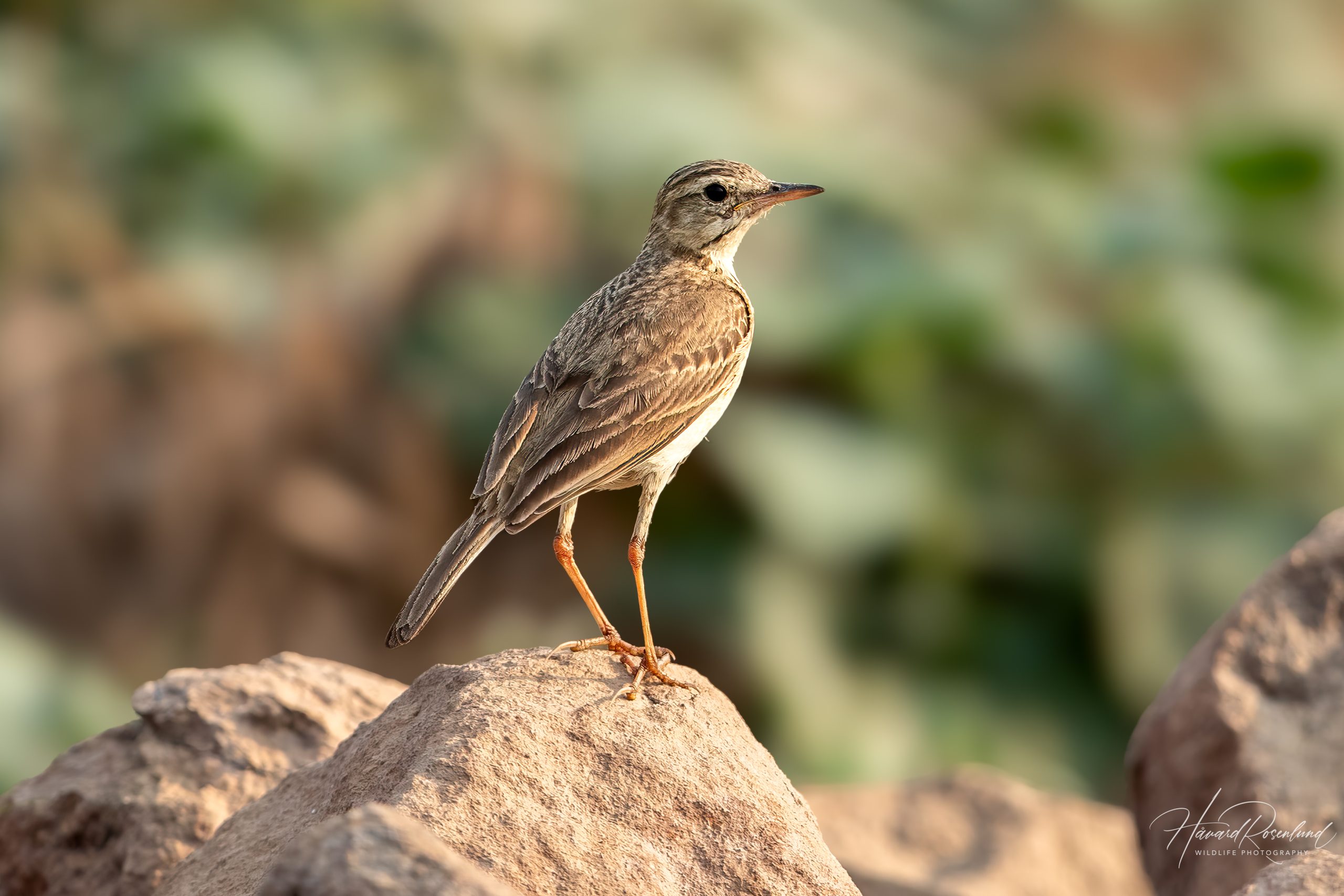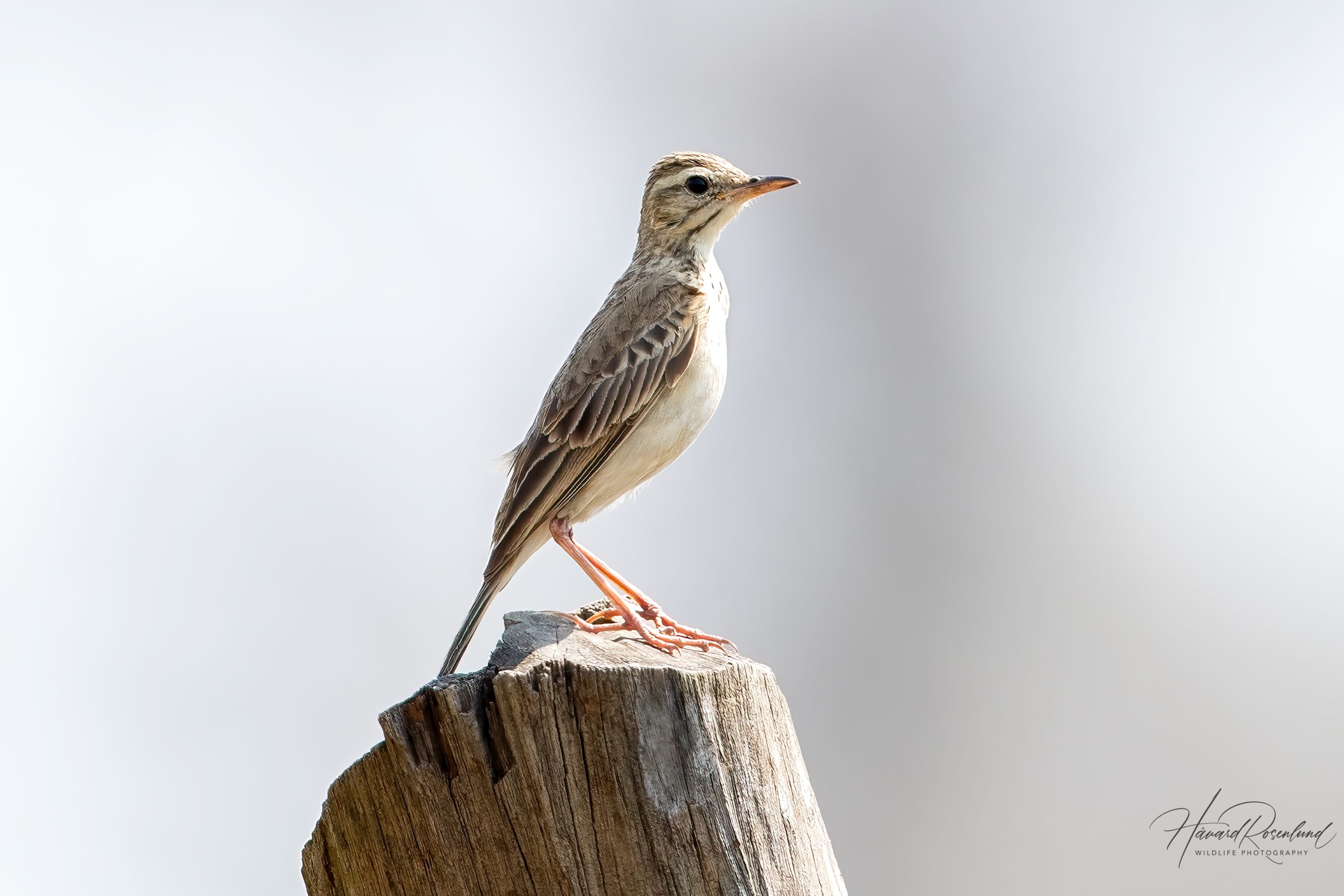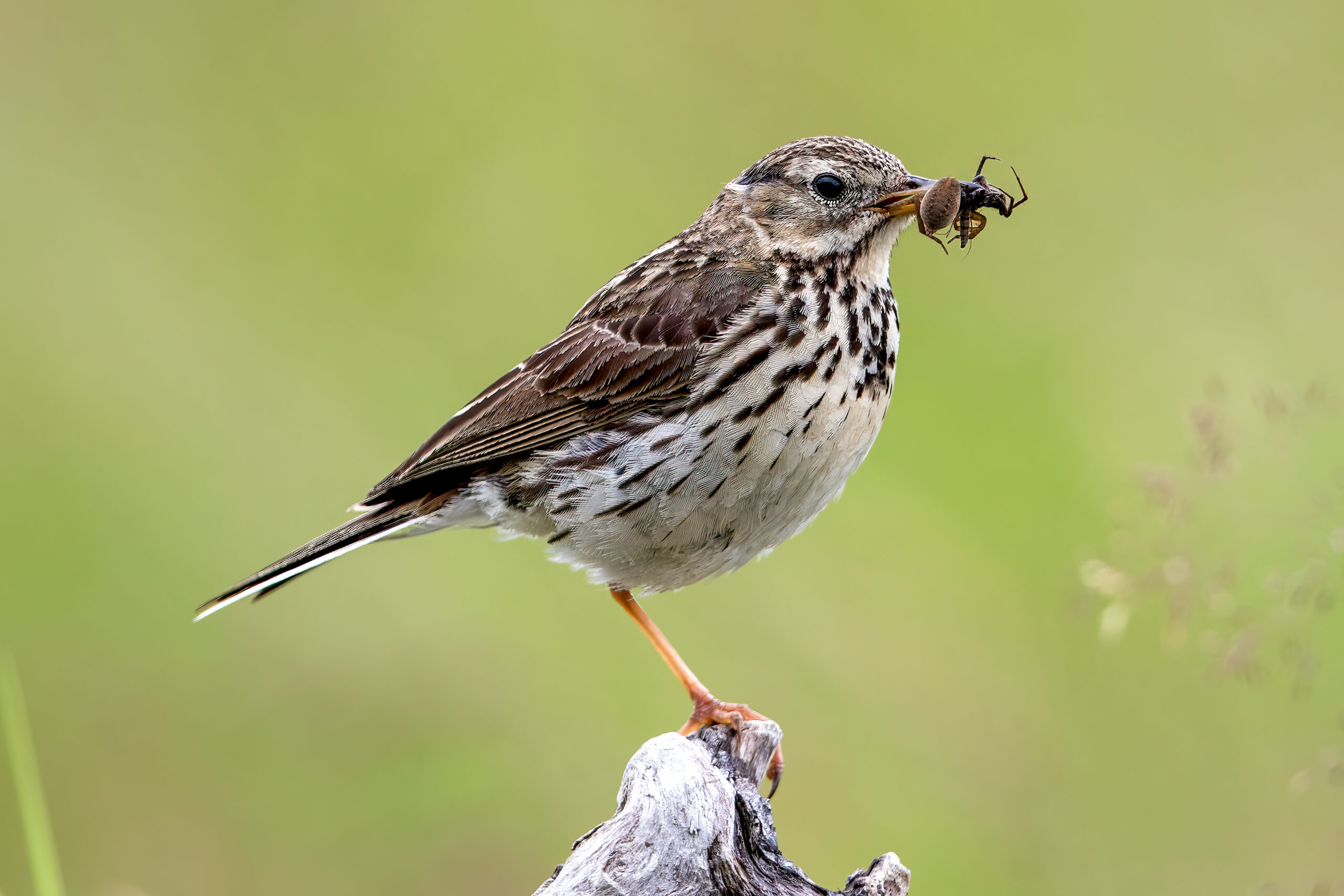Description
The paddyfield pipit (Anthus rufulus) is a widely distributed pipit and a resident breeder across South and Southeast Asia. It is a relatively large pipit, which typically measures around 15-16 cm (5.9-6.3 in) in length with a wingspan of approximately 25-28 cm (9.8-11.0 in). The bird displays a streaked brown upper body with a paler, buffy underpart. Its legs are relatively long, and it has a straight, thin bill. The paddyfield pipit is very similar to the Richard’s pipit (Anthus richardi), which winters in the same region. The paddyfield pipit is smaller than the Richard’s pipit, has shorter legs and tail, and is typically paler and greyer. It is also less streaked and the lores are darker. Vocalizations are also different, and this is perhaps the best way of distinguishing it from similar pipits.
Diet & habitat
The paddyfield pipit thrives in open grasslands, agricultural fields, and scrublands. It often prefers areas with short grass, where it can easily forage on the ground. The bird’s diet consists mainly of insects and other small invertebrates, such as beetles, ants, and spiders. It feeds by walking or running along the ground, using its sharp eyesight to spot prey. During the dry season, it may also consume seeds and other plant materials.
Breeding
The breeding season of the paddyfield pipit varies with location but generally occurs from March to August. The species is known for its ground-nesting behavior. The nest, a shallow cup made from grass and leaves, is typically hidden among tufts of grass or low vegetation. The female lays 2-5 eggs, which she incubates for about 13-14 days. After hatching, the fledglings are cared for by both parents and leave the nest around 10-14 days later, although they continue to be fed by the parents for a short period post-fledging.
Status
The paddyfield pipit is classified as least concern by the IUCN. It has a wide range and is relatively common within its habitat. However, local populations can be impacted by habitat destruction due to agricultural expansion and urbanization. Despite these threats, the species does not face any immediate risk of significant population decline.









